
Hi Gang…
Do any of you watch “History Detectives” out there?
This is a PBS TV program which focuses on discovering the true history and provenance of items brought forth to their show each week. It’s like a cross between the “Antiques Roadshow” and a good “Sherlock Holmes” book, and definitely worth watching if you get a chance.
You’ll get to take a ringside seat on an Indiana Jones style adventure in each episode – albeit a bit less use of the exotic locations that “Indy” takes us on in his films.
So what does this have to do with fiberglass cars? Everything, if you want to discover the true history of that “mysterious” fiberglass sports car you have in your garage. Part of what you need to discover about that “mystery” car of yours is its history – which may have been staring you in the face all these years.
Most people who built their cars back in the day didn’t modify the fiberglass body much at all. They often added little if any trim to the design. Where they took creative leaps and bounds were the chassis, drivetrain, cockpit – and especially the dashboard.
Whereas most fiberglass cars made in the ‘60s came with a fiberglass dashboard for gauges, this was not the case with most of the early and mid ‘50s fiberglass sports cars. At best, you could order an optional dashboard from the maker (Glasspar charged $15 for one), but mostly you were left onto yourself to build the dashboard for the sportscar of your dream. This meant that nearly each and every fiberglass car built in the early and mid ’50s had a unique dashboard and set of gauges.
It is with this understanding, that we at Forgotten Fiberglass state with the greatest of confidence the following….
“Dashboards on fiberglass sports cars of the ‘50s are like fingerprints to modern detectives. If a dashboard has been left virtually unchanged, the current configuration can be matched back to the handiwork of the original fabricator and car – as long as vintage pictures of the car with dashboard remain.”
With this in mind, I asked our resident expert in vintage automotive gauges, Tony St. Clair, if he would be willing to share a bit of his knowledge with the rest of us here at Forgotten Fiberglass.
After all, dashboards are full of those things we call “gauges” and I know of no other person who is better prepared and schooled in the knowledge of this piece of automotive history, and can share this information with us.
And Tony “walks his talk.” He’s an owner of a Glasspar G2 and a LaDawri Conquest. So he’s ready, willing, able, and excited to share what he knows with our group, and help us understand the history of the gauges that were used in our “hot rod / sports cars” of the ‘40s and ‘50s.
Without adieu, let’s hear from Tony. Take it away…..
Vintage Dashboard Gauges
By Tony St. Clair
King Seeley. Waltham. AC Delco. Motometer. U.S. Gauge Co…..
All were major players in the 1930’ and 40’s dashboard instrument arena. But there was one company that produced gauges and dash pieces for every major Detroit car company, as well as Chris Craft, Trojan and a whole raft of boat companies. And they were the first choice for hot rodders, including the likes of Paul Omohundro and Bill Devin. This was the company known as…
When John Stewart bought the Warner Instrument Company in 1912, little could he have known he was launching the most revered brand name in hot rod gauges. They made their name through the ability to adapt their basic mechanics to a host of presentations, all of which may never be definitively catalogued.
They made runs from the thousands, to the hundreds, to the oddball low-run numbers for hot rod tuners. They produced such classic gauge series as the 1940 Ford, 1936 Dodge and Plymouth, 1949-50 Nash pod, the 1937 Nash Lafayette, 1947 through 1952 Crosley, 1938 Chris Craft classic, even the “one-of-fifty” 1948 Tucker set!
That list just scratches the surface of their “name” production examples.
Where they embedded their reputation in the custom car world was their 1950’s Hot Rod Series. This mix-n-match run of gauges and panels was really a adaptation of their famed Nautical Series from the 1940’s. In keeping the same configurations of panels, they neatly re-named them (The “Master” became the “Hollywood”, the “Ensign” the “Straight Five”) and upped the ante on the big 3-3/8” center gauges from a 5k tachometer to 6 or 8, and offering a speedometer in your choice of calibration from 100 to 160.
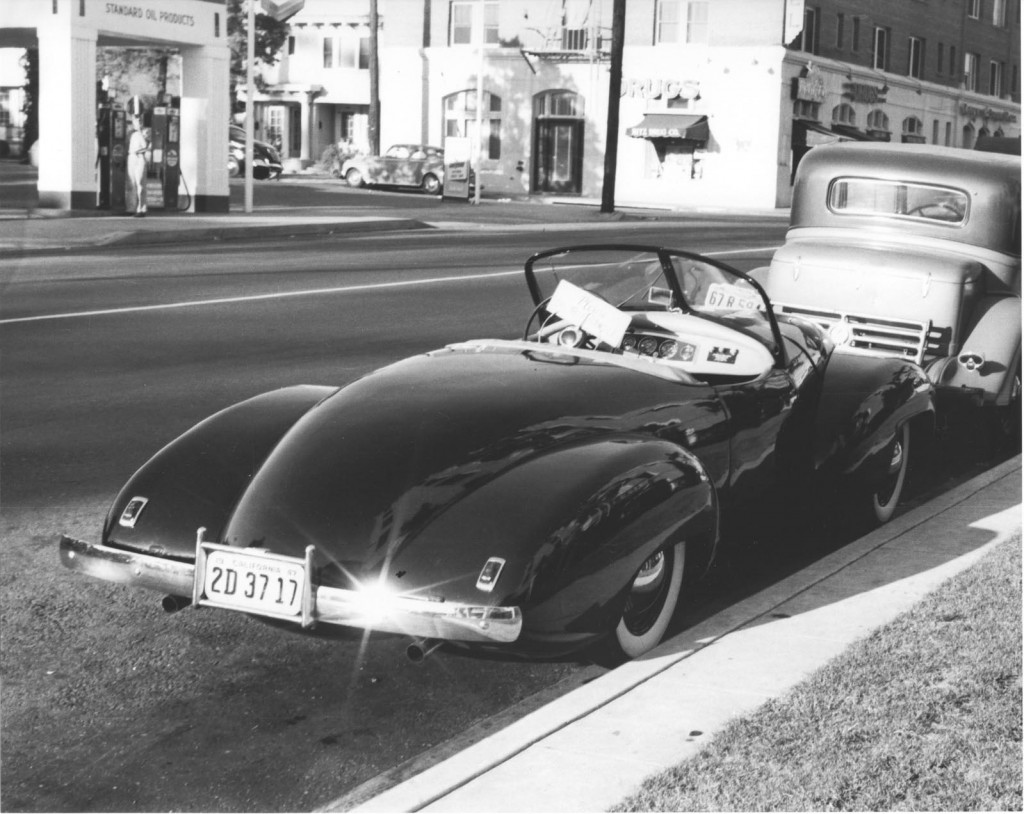
Here’s One Of The Earliest Sport Customs Built – The 1947 Kurtis Omohundro Comet. This Car Was Outfitted With A S-W Gauge Panel And S-W Gauges Too.
And they kept one of the most recognizable speed equipment emblems intact; the famed SW “Wings”. It was all you needed to see on your dial to be assured you had the very best in your cockpit. From the late-Forties to 1955, Stewart Warner ruled the roost. It wasn’t until the mid-Fifties that the great Chicago company had a misstep in their product juggernaut.
When SUN Instruments came out with their clarion call, the electric tachometer, SW made a rare error; they rushed their answer. The Sun unit was sleek, with a separate sender box for 6 or 8 cylinder cars. It was easy to set up, and clean.
Stewart Warner, the best in the mechanical gauge business, was adrift in how to respond. Should they try to one-up SUN with a totally integrated unit, or go for the separation of sender and gauge. Unfortunately, they did both, and created a Frankenstein of a unit that was half-a-foot long and required one of several different plug-in attachments for the distributor. 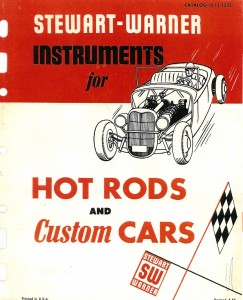
It was bulky, complicated, and the worst sin imaginable for SW; it was ugly. It was a debacle that allowed SUN to gain a foothold and market-share in the tach business, but it was just a speed bump for the “King of Gauges”.
As mentioned earlier the 1947 Kurtis Omohundro Special was not the exception – it was the rule. If you had a sleek custom, or a bad to the bone hot rod, you filled that dash with Stewart Warner gauges.
A 1932 Ford with Auburn panel? Use SW 2-5/8 gauges (you had to replace those fuel and oil gauges anyway) back-mount ones if you can find the elusive gas gauge, or the front-mount “smoothies“, where an individual gauge can set you back $600 on Ebay , or maybe $10 in a flea market (I should be so lucky!).
A 1940 Ford coupe? Well, you’re starting off with SW gauges (a shared production with Waltham and KS as well), but fitting in a Hollywood 8-gauge panel showed you knew what you were doing back then. And because the gauges were nearly identical in sizes through-out 30 years of production, a 1948 back mount oil gauge slipped right into that 1932 Auburn Panel, and a 1953 “Wings” speedometer will fit into the center of a brand-new Stewart Warner “Straight Five” panel, circa 2011.
And the pioneers of racing and rodding realized all of this. The Milner coupe ran pure SW. Briggs Cunningham wanted the best for his pride and joy CR4 series, so Stewart Warner it was. When you look at the twin 5-inch speedo and tach that was part of the official Devin equipment, you can see its’ fore-runner from the back pages of Hot Rod magazine in 1948; the Marings & Co, special custom set.
John Stewart must’ve looked at that 1911 speedometer he built for the Model T, the most popular car of its’ time, and thought, “It doesn’t get any better than this“. It did, to the delight of a hundred-thousand hot rod builders since then.
Thanks John….. from all of us!
Thanks to Tony St. Clair for putting this article together on vintage gauges and the history of this important “fingerprint” of our cars.
I’ve been fortunate to have Tony as a friend and resource for both vintage gauge questions, and vintage magazines from the ‘50s too. Tony is a wealth of information and always ready to extend a helping hand. Thanks for your help Tony!
Also, Tony was kind in mentioning the 1947 Kurtis Omohundro Comet as a seminal car in using these types of gauges.
He’s right in that this was an early coachbuilt sports custom, and would have represented what some of the top builders were deeming as “the right stuff” in terms of their dashboard gauge decisions.
Hope you enjoyed the story, and until next time…
Glass on gang…
Geoff
——————————————————————-
Click on the Images Below to View Larger Pictures
——————————————————————-
- Here’s A Tach For An Allard Sports Car – Made By Stewart Warner of Chicago, Illinois.
- Here’s A Gauge Panel Originally Fitted For a 1938 Chris Craft Boat.
- Here’s The 1947 Kurtis Omohundro Outfitted, One of the Earliest Known Sports Customs Built, With A S-W Gauge Panel – And S-W Gauges Too.
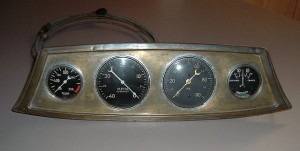
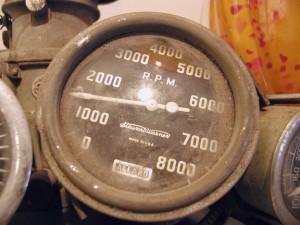
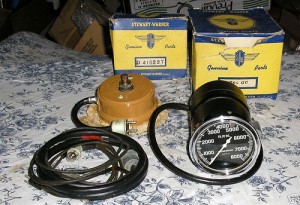
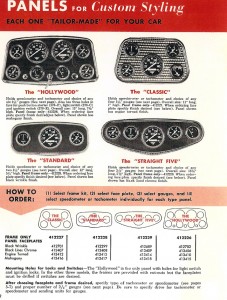

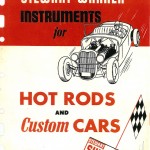
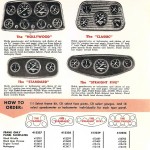
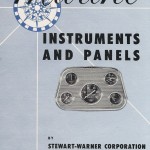
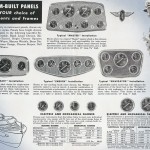
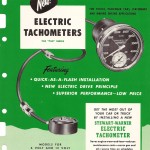
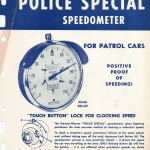
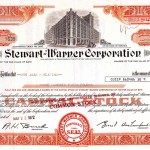
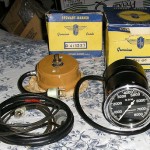
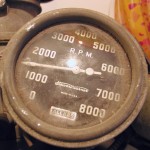
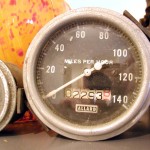
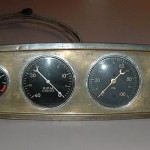
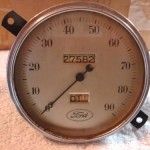
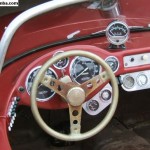
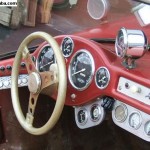
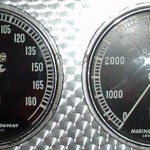
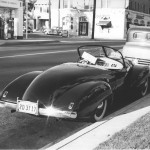

Great article to consider in dating and documenting our cars and an important area not to get wrong during restoration. I’ll assume Tony has a collection of catalog inserts for all the instrumentation as well. Question: what companies rubber stamped production dates onto the back of their gauges (typically done for quality control) and was the practice beyond the larger speedometer units where I’ve often witnessed it? Thanks!
Wayne, most companies stamped a code onto the back of their gauges from the late-thirties on. Some. like Borg-Warner, Jaeger and GM actually put a month/year date on the back; Stewart Warner had a coded letter for year and number for month which started in 1933; for example, D 11 meant the gauge was built in 1936, in November (11th month). Check out http://www.roadsters.com/sw/ for more info on this chart. The pages are generally correct, with a few small errors.